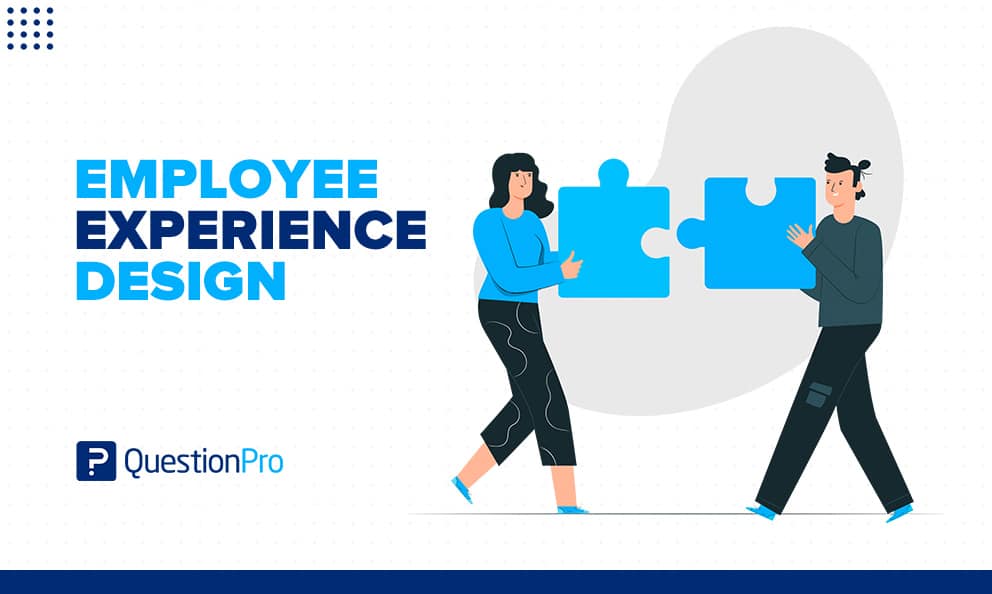
Employee experience design is the creation of a plan for human resources to use products or services actively or passively. One of the main goals is to improve the customer experience by getting employees more involved and offering them more freedom. In general, employee experiences determine how employees feel, act, and if they’re loyal or not.
HR professionals and other organizational executives should plan every part of the employee experience, from hiring to retirement, with employee care. How do you design the employee experience? Read on to learn more.
What is an employee experience design?
Employee experience design is the process of improving employees’ workplace experience. The employee experience design is more than just designing how employees feel about their jobs, it is something you accomplish every day at work.
LEARN ABOUT: Workplace Employee Experience Examples
Suppose you’ve called customer service and had a pleasant conversation; it means you’ve gone through an experience design (EX design). An example of employee experience design is the collaboration with an IT team to get a workstation fixed or enjoy a benefits package.
Importance of employee experience design
It is essential to design the employee experience because it can help all departments become more engaged, motivated, and productive. Does designing the employee experience improve the chances of getting work done, engaged, or motivated?
Yes! When employees are happy and feel like they belong in their company’s culture, they are more engaged and motivated than when they don’t feel like they belong. And happy workers tend to do their jobs better and be more productive.
Employee experience design strategy
You can follow the steps detailed below to build a good employee experience design in your company:
- Understand and observe
Identify specific situations in the field and consider employees’ feelings, not just their actions. Emotions affect interpretations. So it’s essential to determine the cause. Observing employees means visiting their office, factory, hospital, or field. Visit each employee’s workplace. Avoid anything that could upset someone.
The most effective method for gathering employee feedback is to survey or poll employees on various work-related topics. However, this is not possible for large corporations with thousands of employees.
Therefore, surveys measuring “pulse” and “satisfaction” are used in their place. By mixing observation and free-flowing conversation. And surveys are the best way to get a comprehensive picture.
- Think of ideas and brainstorm
After you know what the current EX is like, the next step is to “innovate” or think of solutions to problems you learned through continuous feedback. In this phase, new ideas generate. It’s not a job for one person or HR alone. For the best results, put together a team of employees and leaders from different departments.
After you have formed a team, you should have everyone come together to figure out how to solve problems. Try new things without letting fear hold you back. You want there to be a maximum number of options.
Therefore, do not disregard ideas simply because they appear silly. If you run out of ideas, choose the ones that have the best chance of succeeding with your team.
- Test and implement
We can start testing. Try to put your best ideas into action. Ask the employees what they think about this. If you don’t think about how your solution affects them, your work will be for nothing. Tell employees that new solutions are being tried out and that their feedback may change things.
Your solutions may cause new problems. You could provide your employees with access to a coworking space if you do not have meeting rooms available. It will be more challenging to communicate with one another due to the absence of particular workers. If that doesn’t work, you should try another method.
You’ve reached your implementation goal when a solution works and most of the feedback you get is positive. Even though a few problems have been fixed, the process of employee experience design is not over.
LEARN ABOUT: Employee Experience Strategy
Ultimately, allowing employees to drive the process is the essential step in designing a good experience for employees. You will be able to create a setting in which your workers are more engaged in their work and happier if you have faith in their ability to determine what they require to do their jobs.
Conclusion
Finally, the most critical aspect of designing a positive employee lifecycle experience is to let employees take the lead in the process. When you have faith in the abilities of your staff members to perform their jobs effectively, you will have workers who are engaged in their work and happy in their careers.
Find out how to get ongoing feedback from your employees and take action to improve your company with QuestionPro Workforce.







